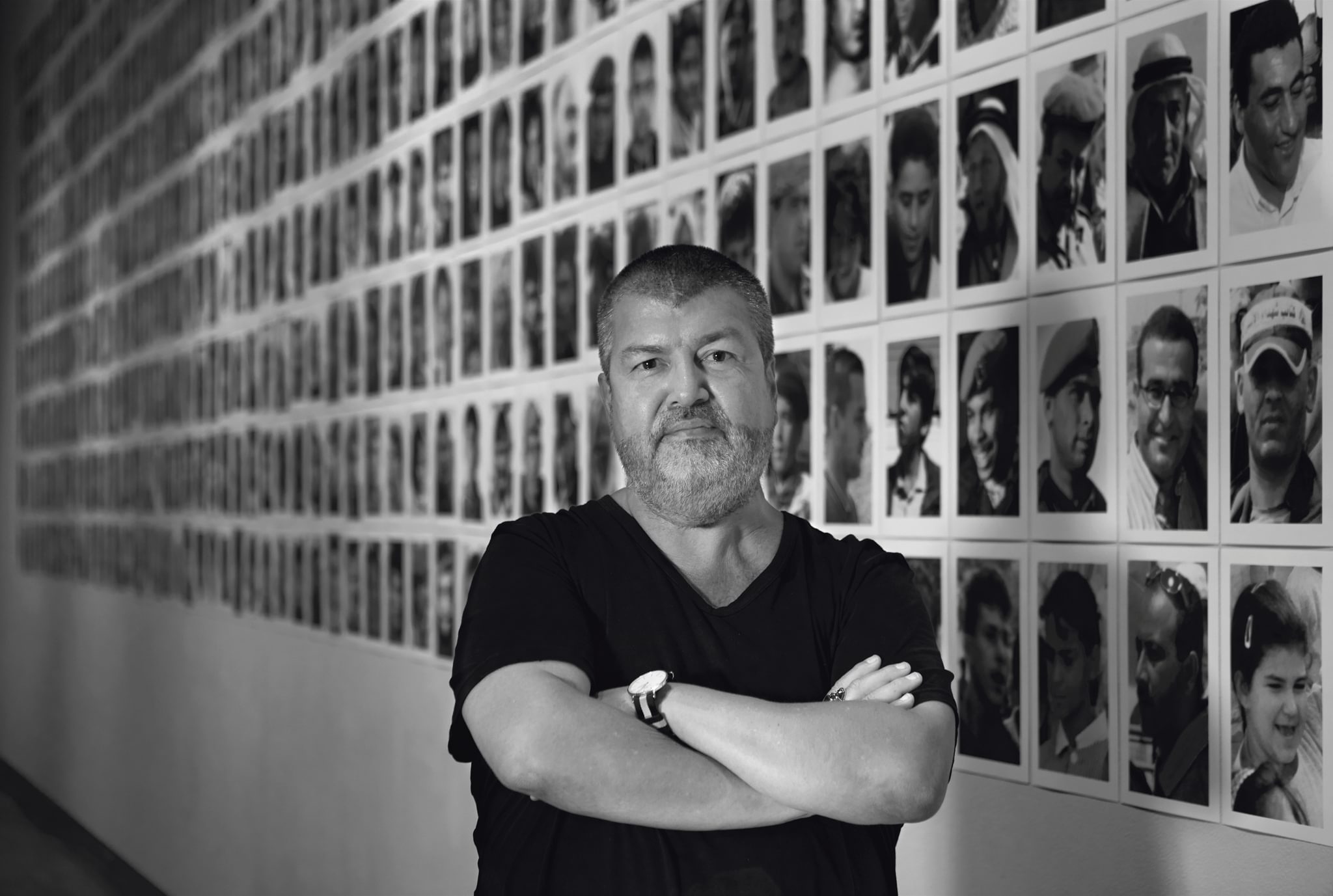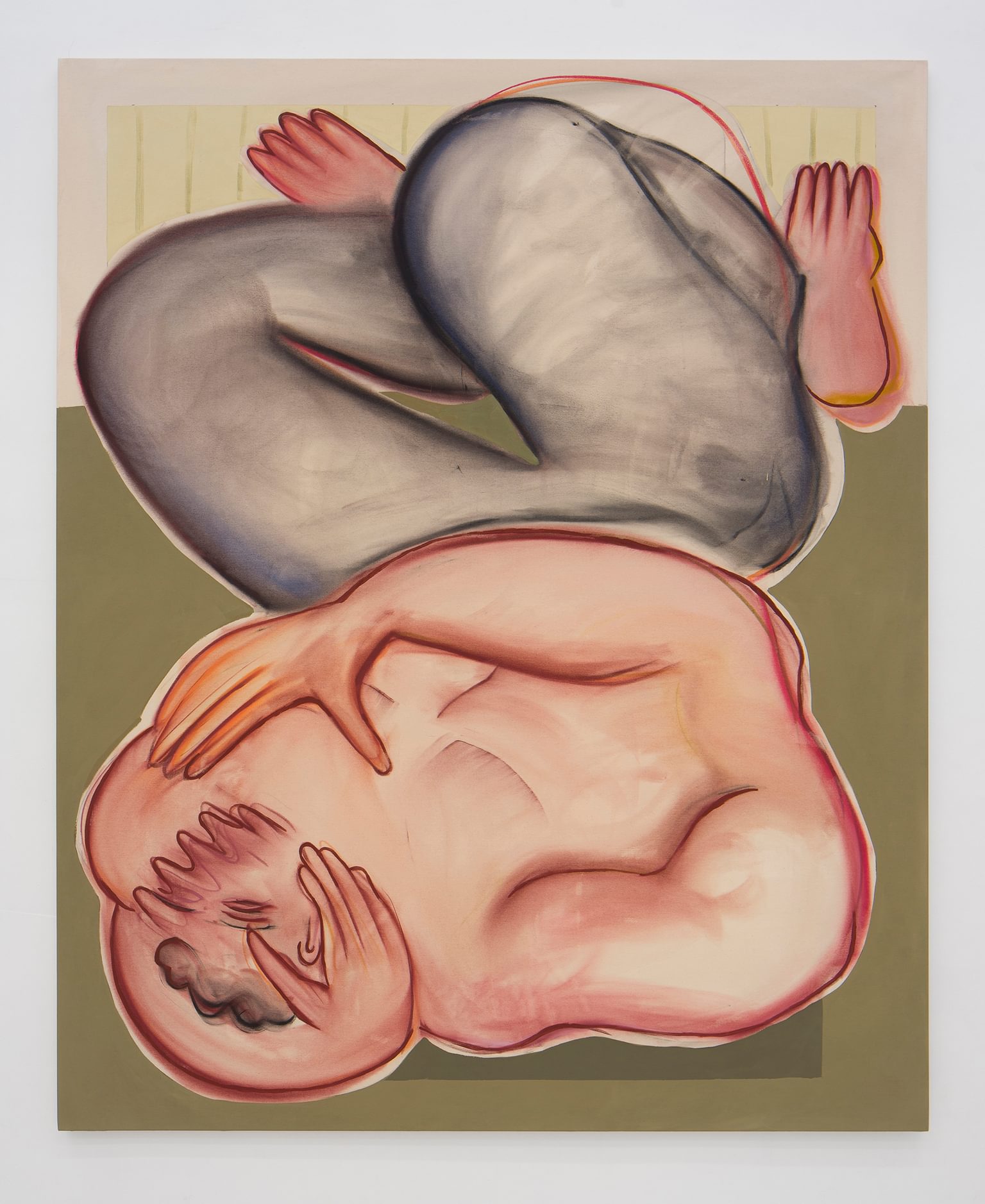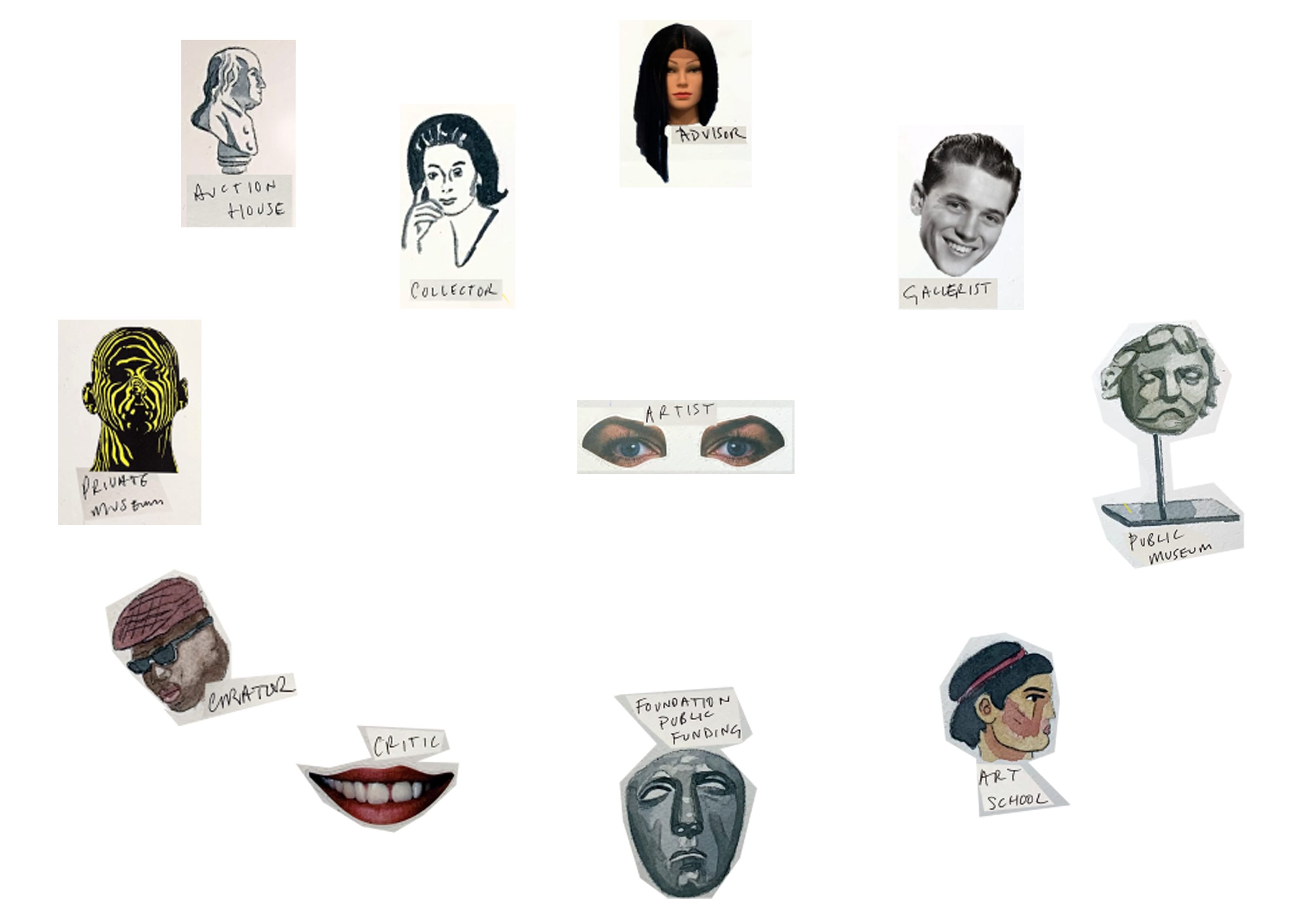
Illustration by David Risley
Over the coming months, CHART will shine a light on the industry and its internal dynamics, giving you an insider's guide to the Nordic art scene. We will explore the passions that get people up in the morning and present new perspectives on both the everyday and long-term processes that shape our cultural landscape.
We’ll kick off with a “who’s who” guide to the art world, drawn and explained by artist and former gallerist David Risley, to help plot the different positions. Read on for David’s playful mapping of the art world’s key players - if you see yourself, we hope you’ll smile…
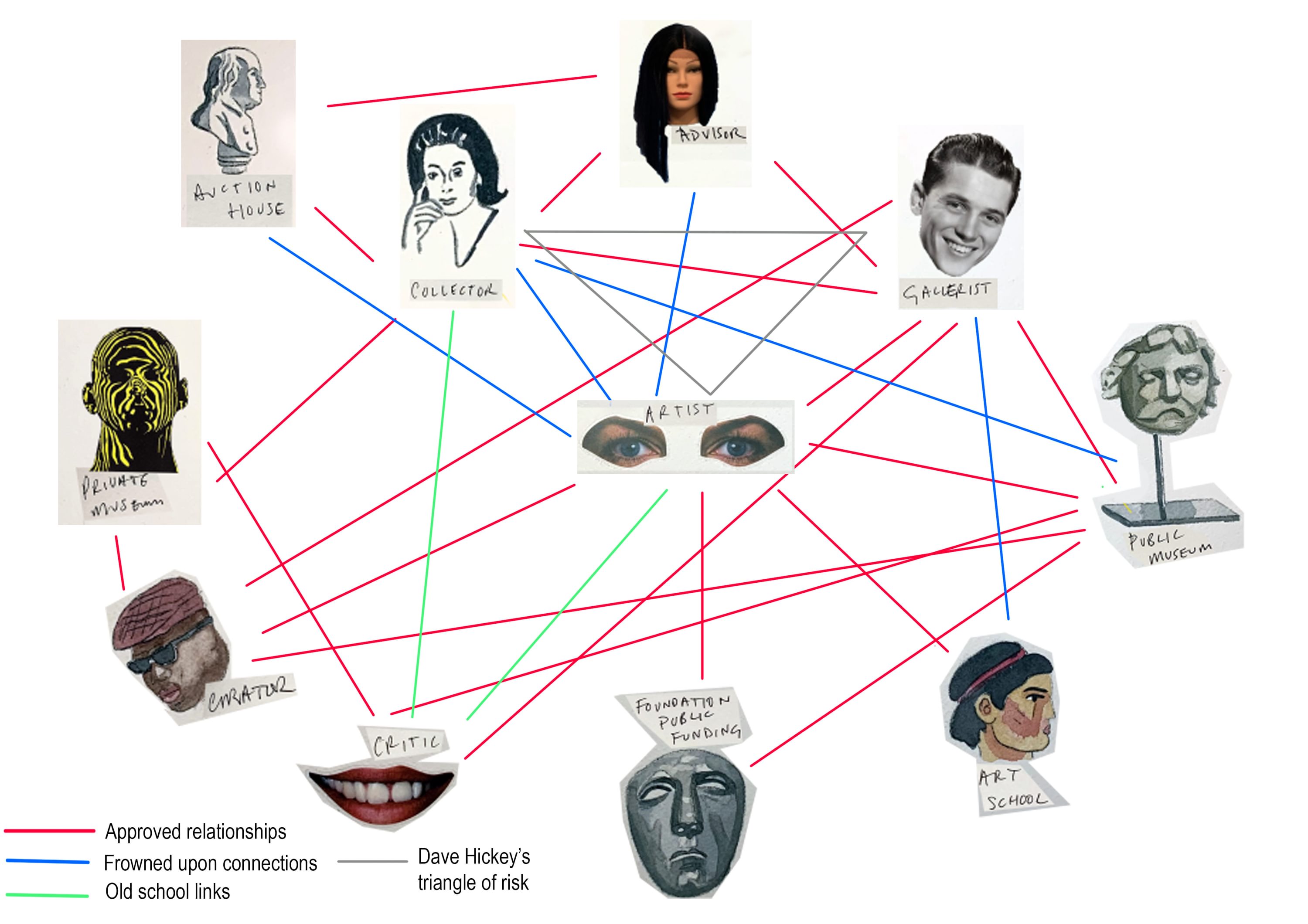
Illustration by David Risley
Artist
From the struggling to those hell-bent on world domination, they are the centre of it all. Without them, none of the other jobs would exist. Making and exhibiting paintings, sculptures, installations, films, performances etc.
Gallerist
Agent, manager, curator, salesman, confidante, therapist. Gallerists represent artists and work with them over long periods of time to help build and manage their career through exhibitions, sales and building a network of influential connections.
Collector
The fuel. Individuals who buy works of art, primarily to keep and to own. From actual aristocracy refreshing their family holdings to corporate lawyers hoping that being around art and artists will magically make them more interesting. Free dinners for life if you spend $1000 at a young gallery.
Art Advisor / Dealer
Working independently to help clients buy and sell art by building relationships with galleries. At their worst they’re self important interior designers paid to point at things by oligarchs. Can vary from bored housewives selling bad art to their husbands' banker friends to genuine international power brokers.
Art Critic
Their opinions were historically capable of making and breaking artistic careers, defining movements and advising powerful, market-supporting gallerists and collectors. Their influence has wained at a time when their voice is more necessary than ever to cut through the seemingly endless abundance of artistic production.
Art Fairs
A global merry-go-round of trade fairs, hosting galleries to sell art in cities across the world. Significant cultural drivers in the international exchange and exposure of art.
Auction House
Traditionally trading antique and historical objects openly in the auction room. Increasingly operating directly in private “secondary market” sales, organising exhibitions and acting as primary sales agent between artist and collector.
Independent Curator
Freelance experts who make exhibitions in a variety of museum, gallery and other spaces. Can also be art world short-hand for "currently between roles".
Public Institution Director
Art historians role-playing as powerful CEOs. Fundraising from governments, foundations and billionaire collectors while trying to retain independence. Leadership styles range from full democracy to totalitarian regimes (and that’s just in Denmark).
Private Museum
Collectors pursuing questionably philanthropic levels of public engagement with the treasures they have hoarded.
Foundation Director
Holding the purse strings of public money and private or corporate philanthropic funds. Defining the cultural landscape through power, money and politics.
Art School / The Academy
Where it all begins. Discourse is learned, skills are honed and superstars are born. A handful of global art schools are keenly watched by hungry galleries and collectors looking for the next new talents.
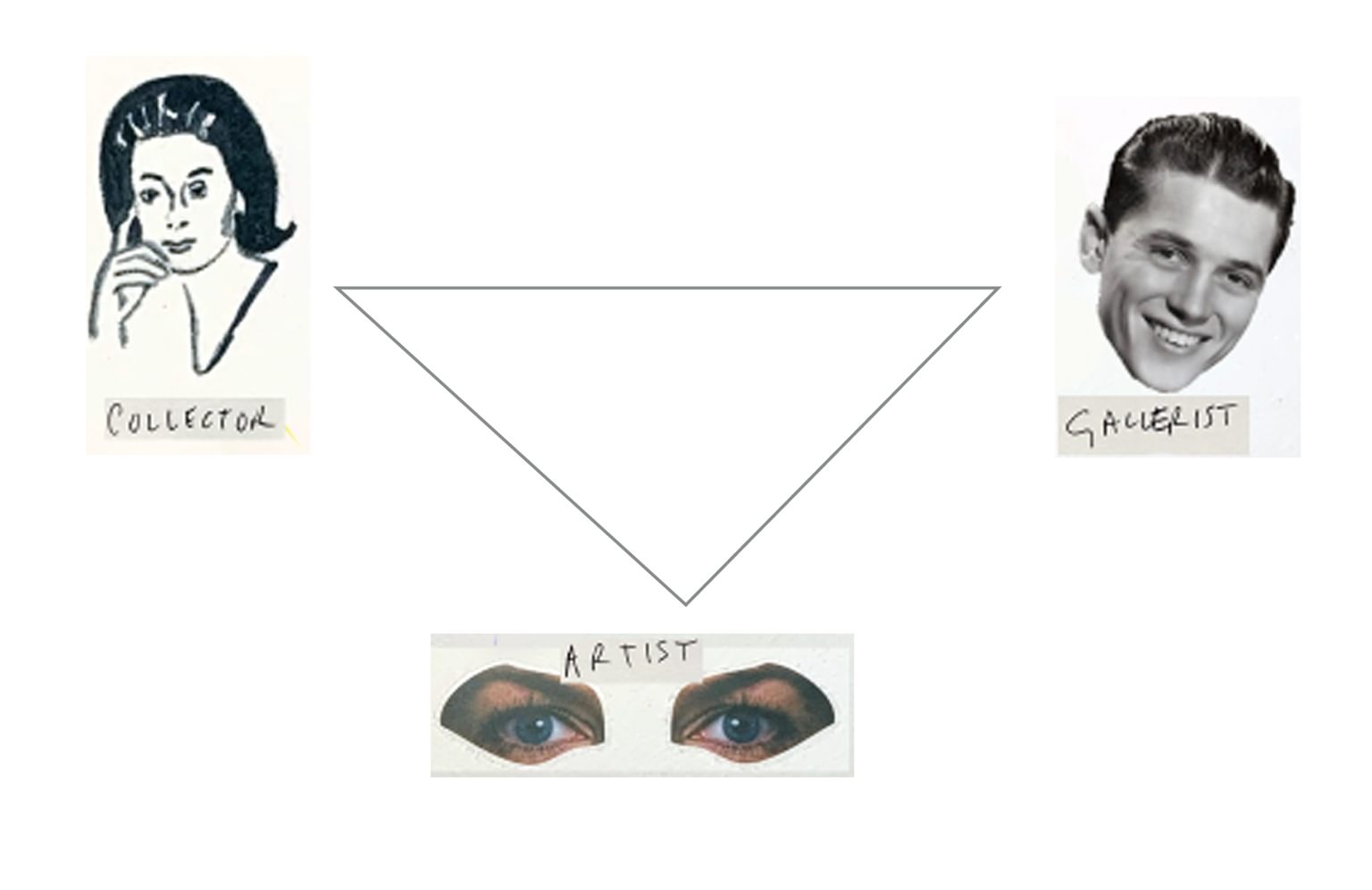
Dave Hickey's triangle of risk
Illustration by David Risley
"Artists: From the struggling to those hell-bent on world domination, they are the centre of it all. Without them none of the other jobs would exist."
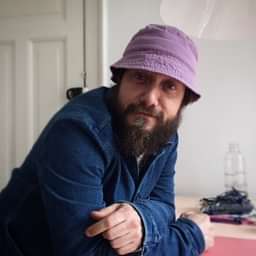
David Risley is an artist. He ran David Risley Gallery, in London (2002-2010) and Copenhagen (2010-2018). He was founding Co-curator of Bloomberg Space, London (2002-2005), Co-founder of Zoo Art Fair, London (2004), and Co-founder and Co-owner of CHART. He continues to write, curate, and develop projects with artists. He is developing a sustainability project for public-facing institutions.


